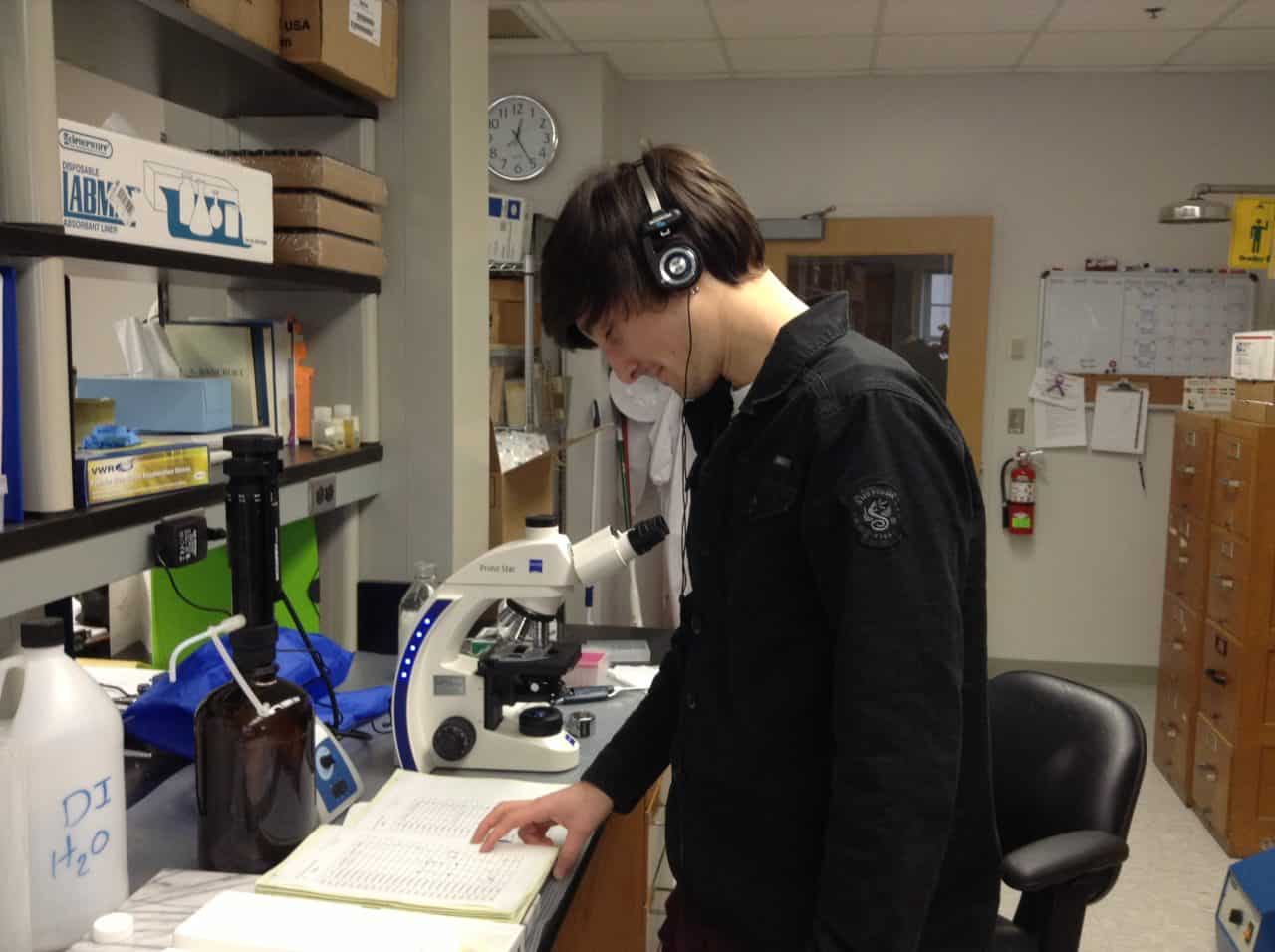Sampling large numbers of beekeepers takes considerable behind-the-scenes planning and work and this aspect of the project usually goes unseen and is underappreciated. I want to shed some light on what we all do to prepare for a hectic and fast-paced sampling season. Our spring sampling kits arrived from the east coast in several boxes. Team member Karen Roccasecca in Pennsylvania put the kits together consisting of a labeled alcohol bottle and virus sample bottle in individual bags. The individual bags contain both bottles and were grouped in 12 then placed into larger bags and eventually boxed. She then shipped them to our team at…
Month: February 2013
Update from the UMD Lab
Beekeeping this time of year in the Northeastern US is practically nonexistent. Honey bees cluster around their queen in their hives as below freezing temperatures, wind, and snow challenge their survival. Opening the hive in these kinds of conditions would be setting yourself up for failure. Winter this year in Maryland has been very unpredictable. For instance, just last week we experienced a 65 degree day and the next day the temperature dropped and we had snow on the ground. I originally thought that our diagnostic lab would experience a lag in receiving samples, but man was I wrong! In other parts of the country…
How are your bees?
Most of the commercial beekeepers in the Midwest move their colonies to southern locations for the winter, primarily to California for the pollination of almonds. I get to go where the bees go. I spent the last couple of weeks sampling beekeeper sin the San Joaquin valley in California. Beekeepers from across the nation truck bees to California to place them in the almond orchards. Just driving around, you can see all sorts of bee trucks. Most often, the truck drivers will unload in holding yards or staging yards where the colonies will wait until placement in the almond orchards. I attended meetings held by…
APHIS US Honey Bee Pest and Disease Survey 2011/2012 Survey Report
The APHIS 2011/2012 Honey Bee Pest and Disease Survey report This report details the result of a year long, 35 state honey bee survey that, as a primary goal, looked for invasive species such as the parasitic mite, Tropilaelaps spp., the Asian honey bee, A. cerana and Slow Paralysis virus (SPV), not known to be in the US at this time. Further honey bee health data were collected and will be added to the Bee Informed Partnership database to help interpret ongoing and future epidemiological studies. This report and previous year reports are available at http://www.aphis.usda.gov/plant_health/plant_pest_info/honey_bees/index.shtml
